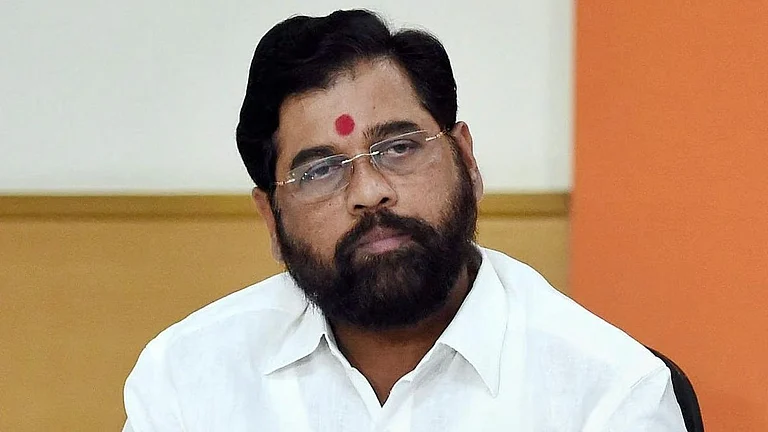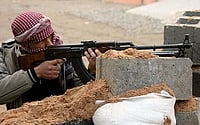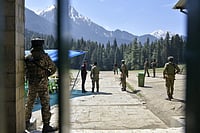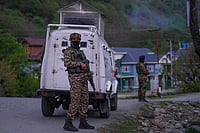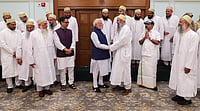
A high-pitched battle awaits as we inch closer to the 2024 Lok Sabha election scheduled to be held in seven phases from April 19 to June 1. The last five years, BJP-led National Democratic Alliance's second term, saw a series of civil protests, political cross-firings and constitutional debates. At Outlook, we are closely tracking the developments and bringing to you exclusive stories, ground reports and in-depth analysis of the state-wise electoral scenario, focusing on regional parties, their journeys in recent years and how it will play out at a national level.
Today, we are looking at Maharashtra which has witnessed a significant transformation in the run-up to the polls. Maharashtra’s 48 seats, the second highest after Uttar Pradesh, will play a decisive role in determining whether the BJP holds a single majority in the country. With recent shifts, the BJP led Mahayuti Alliance with Eknath Shinde's Shiv Sena faction, The Maha Vikas Agahdi led by Uddhav Thackeray's Shiv Sena UBT in with the split NCP camps pitted against each other, the state has become a political hotbed.
दारिद्र्याच्या उन्हात शिजला, निढ़ळाच्या घामाने भिजला
देशगौरवासाठी झिजला
झिजला ... झिजला ...
देशगौरवासाठी झिजला
दिल्लीचेही तख्त राखितो, महाराष्ट्र माझा
Burned in the heat of poverty, bathed in the sweat of hard work,
Worn out for the glory of the nation, defended even the throne of Delhi, My Maharashtra
The evocative lyrics of Maharashtra’s official state song could not be more apt to describe the state’s immense significance in the upcoming Lok Sabha elections. With Mumbai as the financial nerve center, housing the headquarters of major corporates, banks, and the stock market, Maharashtra has long made the highest contribution-- 38.79 lakh crore accounting for 15.7 per cent -- to maintain the country’s fiscal state in the pink of health. Now, it may all come down to the winning party in Maharashtra which will decide whether or not Prime Minister Narendra Modi can comfortably hold the chair in New Delhi.
Maharashtra’s 48 seats, the second highest after Uttar Pradesh, will play a decisive role in determining whether the BJP holds a single majority in the country. The borders of the Hindi heartland, which the BJP has a firm grip on, falter when they reach the state’s rocky Sahyadri plateau range and shores of the Arabian Sea. Like the Southern states, Maharashtra also has been a tough ground for the BJP to infiltrate.
If the regional states were to play a poker game in the 2024 Lok Sabha elections, Maharashtra’s winning hand would certainly be a Full House- three cards of the same rank and two cards of another rank. Replace the cards with the Bhartiya Janata Party, Shiv Sena, and the Nationalist Congress Party, as the OG big three and the Eknath Shinde’s Shiv Sena and Ajit Pawar’s NCP, as the two parties from another rank along with Raj Thackeray’s Maharashtra Navnirman Sena, and you have a crowded full house. Together, the six-of-a-kind political parties and their factions will play a high-stakes game for survival in the state.
Although the BJP-led MahaYuti coalition seems to be the obvious candidate to win the majority, especially after co-opting 3 parties -- Shiv Sena (Shinde) faction, NCP (Ajit Pawar) faction, and the MNS-- that might divide its vote share, its path to victory remains complicated.
“Maharashtra seems to be a challenging state for the BJP. If it wants to win nationally, it will have to win Maharashtra and Bihar,” says Suhas Palshikar, Pune-based academic and leading political scientist. The BJP in Maharashtra has the burden of two alliance partners, which will constrain its capacity for seat sharing. BJP’s game in fracturing a split in Shiv Sena and the NCP to get back to power appears clever in terms of real politics, but it may not be so for the voters, he added.
“The fragmentation has also generated sympathy factor towards the victims, Uddhav Thackeray and Sharad Pawar and it remains to be seen, how it will operate and how the voters will react to it. Maharashtra has thus become a challenging riddle.”
A year ago, in a dramatic turn of events, Eknath Shinde rebelled against the Uddhav Thackeray-led Maha Vikas Aghadi (MVA) government, comprising the undivided Shiv Sena, Nationalist Congress Party (NCP), and Congress, causing it to fall with the support of 39 MLAs. Shinde then allied with the BJP to form the government and seized the Chief Minister’s chair dislodging Thackeray and former CM Devendra Fadnavis, whom many in the BJP expected to hold the top post.
Since the split, several more prominent Sena leaders fled Uddhav’s camp to join the ruling coalition of Shinde’s Shiv Sena and the BJP. The Shinde Sena boasts 40 MLAs in addition to the support of 10 independent MLAs, 13 MPs, and 4 MLCs. With NCP and MNS, the BJP-led Mahayuti coalition has set aspirations to make a clean sweep of 48 seats, party leaders said.
“At this stage, the BJP does not appear to be confident about its performance in the elections and that is why it is forced to try unusual permutations and combinations like getting the opposition party like MNS on its side or poaching Mahadev Jankar, a regional leader of a small party the Rashtriya Samaj Paksha (RSP),” says Sanjay Patil, research scholar on Maharashtra’s politics and elections at the Mumbai University.
The BJP has contended that it has brought a “double engine” growth of development in Maharashtra with Modi at the center and Devendra Fadnavis (2014) and Eknath Shinde (2019 to present) as the chief ministers. The MahaYuti coalition is likely to flaunt its achievements of approving the Maratha reservation, showpiece infrastructure projects like the 701-km Mumbai-Nagpur Samruddhi Expressway, 21.8-km Mumbai Trans Harbour link (MTHL), Mumbai Coastal Road and Metro rail projects and the Dharavi redevelopment.
But in the last ten years, the party has grabbed headlines for indulging in horsetrading, poaching influential regional leaders and engineering splits in Sena and the NCP. “If the BJP had a worthwhile performance on developmental works and achievements to show the voters, then it would not have needed to import candidates and divide other parties, and even after all this theatrics, it is still not sure of retaining its past seat share,” Patil added.
Although the Election Commission recognised the rebel factions of Sena led by Eknath Shinde and of NCP by Ajit Pawar as ‘real’ giving them control over the party name and the symbols, it will be imperative for both the parties to prove their mettle in the Lok Sabha polls. Patil feels Sena and the NCP factions will still need to fight the final battle to prove their worth in the form of votes in the court of the public.
Once a dominant party in Maharashtra, Congress has been reduced to the status of a reserved party. It won a lone seat in the 2019 elections following the victory of its candidate Suresh Narayan Dhanorkar, from the Chandrapur constituency in the Vidarbha region. But Dhanorkar’s untimely death in May 2023, has left the party with no representation from the state at the national level. In February, former chief minister Ashok Chavan, one of the most influential Congress leaders joined the BJP, putting the party’s future in the state in peril. Congress will have to fight with full force to prevent getting wiped out from Maharashtra, the state where it was founded nearly 140 years ago.
Likewise, Raj Thackeray’s MNS whose candidates have never triumphed in the previous Loksabha elections, will have the burden to win at least one seat after allying with a giant like the BJP.
A lot depends on who wins Maharashtra this time, as the Loksabha polls will be a testing ground for the key Maharashtra Assembly elections due in six months.
“All in all, it is an existential battle. For all the parties it is a high-stakes political game and for the leaders, it is a battle of prestige to ensure victory and retain their home turfs,” Patil said.
Maharashtra has the second highest population in the country with an estimated 11.24 crore population (as per the 2011 census) of which nearly 45 per cent live in urban areas and towns. It is divided administratively into Konkan, Pune, Nashik, Aurangabad, Amravati, and Nagpur divisions.
Lok Sabha elections to the 48 seats in Maharashtra of which 39 fall in the general category, 5 are reserved in the Scheduled Caste, and 4 in the Scheduled Tribe category. Polling will be held in 5 phases beginning on April 19, April 26, May 7, May 13, and May 20 and counting of votes will be held on June 4. Around 9 crore voters have been listed in the final electoral rolls published in January. his includes 4.7 crore male voters, 4.3 crore women, and 4,735 transgenders. This includes 4.7 crore male voters, 4.3 crore women, and 4,735 transgenders.
Age-wise, Maharashtra is a young state with 3.5 per cent of the population filled with 18-19-year-olds. However, political apathy among young voters has led to extremely low levels of registration, amounting to a mere 0.5 per cent from this section. In comparison, the young adult population in the age group of 31-39 years constitutes the highest voters at 2 per cent of the total population. In the 2019 polls, there were 8,43,63,350 electors and a total of 5,40,54,245 voters cast their votes.
Geographically, Maharashtra has the third largest area. This year the Election Commission will set up 97,325 polling stations, across the state the highest ever and 1,852 more than last elections. For the first time, the EC will also display candidate's details including their assets and criminal records, at the polling stations for the voters to make informed choices.
The Loksabha elections will be the most awaited as it is the first to be held since the fragmentation of Shiv Sena and NCP. Six major political parties will be in the fray for the elections: the BJP, Shiv Sena (Shinde), Shiv Sena (UBT), NCP (SP), NCP (AP) and the MNS. The divisions have created confusion among the voters as the party names will not be easily identified from the symbols.
Shiv Sena party’s name and emblem of bow and arrow set against saffron shade belongs to the Shinde faction, while the official heir to the party’s founding family (Thackeray) has taken a new identity, Sena (Uddhav Balasaheb Thackeray)' as the party name and the ‘flaming torch’ as their election symbol. The Nationalist Congress Party’s name and clock emblem now belong to nephew Ajit Pawar and the EC has allotted the symbol of "man blowing turha (a traditional trumpet)" as the new symbol for Nationalist Congress Party-Sharad Chandra Pawar. The multiple parties, emblems, and flags in addition to independent candidates, and rebels are bound to create chaos in the minds of voters at the polling booths.









